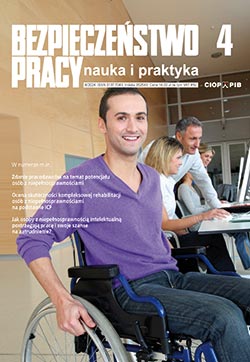Vibroacoustic hazards to the environment
Czesław Cempel
The article presents the basic definitions used in vibroacoustics, such as noise, infrasound and ultrasound. The theory of the sustainable development has also been acknowledged, especially in the context of vibroacoustic hazards towards environment (including the human work environment) followed by the proper understanding of the so-called “system” approach to such threats, as well as an accurate way of performing a risk evaluation in relation to vibroacoustics and diminishing them.
Vibroacoustic parameters remote measurement system with the use of renewable energy sources
Leszek Morzyński
Renewable energy is increasingly used in technology to power electronic devices. Renewable energy reduces maintenance costs, has a positive impact on the natural environment and provides more autonomy to devices. This article presents the concept of a system for monitoring vibroacoustic parameters of the working environment, with noise and vibration measuring devices powered with renewable energy. It discusses different kinds of sources of renewable energy and their possible use in the proposed monitoring system.
Objective criteria for assessing acoustic properties of open space administrative offices
Witold Mikulski, Izabela Warmiak
It is increasingly common to locate office workstations in large rooms. This type of work creates the need to communicate; however, employees who do not take part in a conversation should not be disturbed. The EN ISO 3382-3 standard defines some parameters for acoustic assessment of these rooms: spatial distribution of speech transmission index, distraction distance rD, privacy distance rP, A-weighted sound pressure level of speech at 4 m from the speaker and a decrease in A-weighted sound pressure level of speech at double the distance from the speaker. This article describes methods for measuring these parameters in a sample open-plan office. The results of the measurements show that a positive assessment of this room is impossible, despite the fact that in contrast to other rooms of this type, it had been acoustically adapted to office work. This proves that it is necessary to adapt acoustically such rooms to a much greater extent that commonly believed. On the other hand, this also proves that this standard sets very high acoustic requirements for open-plan rooms.
Harmful biological agents in cabin crew's working environment
Agata Stobnicka, Rafał Górny, Małgorzata Gołofit-Szymczak
Contact with bioaerosols is an important hazard for cabin crew. It may result from the ventilation system, carried hand luggage and passengers’ and transported pets’ body fluids. With the increasing popularity of air transport and a constantly increasing number of passengers travelling by air who may be symptomatic or asymptomatic carriers of various diseases, a rapid spread of harmful pathogens in a closed aircraft cabin is constantly observed. That situation can be dangerous not only for cabin crew but also for other passengers. When performing their duties, cabin crew may be exposed to harmful biological agents such as bacteria, fungi and viruses, which can cause various disorders and diseases.




























